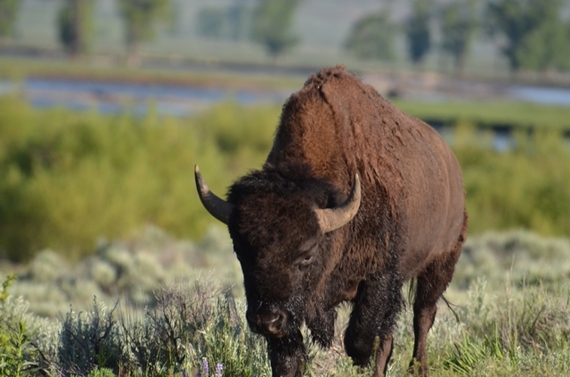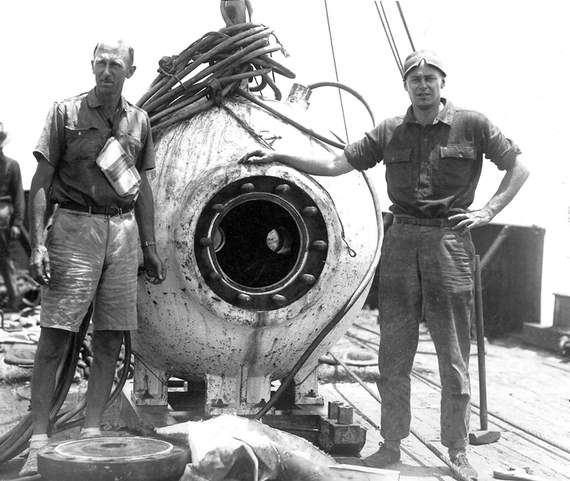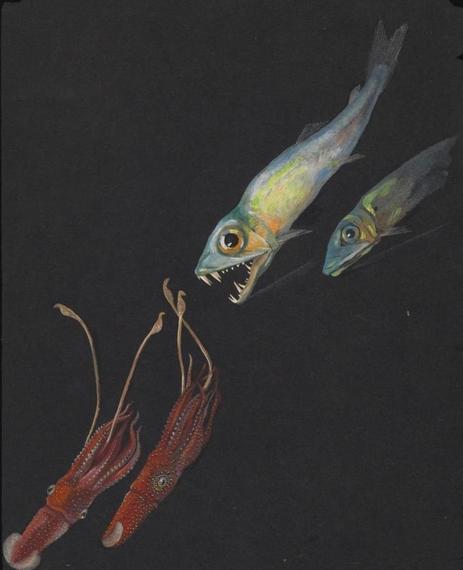It is perhaps fitting that the 120th anniversary of WCS (Wildlife Conservation Society) this week coincides with the establishment of three new marine parks in Madagascar. Since its founding 12 decades ago, WCS - originally the New York Zoological Society (NYZS) - has dedicated itself to the protection of wildlife and wild places, with the exploration of, and advocacy for, marine seascapes being a high-priority.
The new marine protected areas are the nation's first. Located along Madagascar's western coast in what is known as the Mozambique Channel, the new parks are home to the world's second-most diverse coral population. Together with the government and local communities, WCS has worked in these three sites over the last five years to develop and establish a new conservation model that uses a community-driven, science-based approach.

Madagascar's three new marine protected areas will help to secure the world's second-most diverse coral population. Photo by Jürg Brand.
That approach has evolved over the course of more than a century of dedicated conservation action. It was a recognition in the late 19th century that rapid industrialization was quickly depleting valuable natural resources that spurred a fledgling environmental movement. As that movement gained momentum, we saw the creation of the world's first national park at Yellowstone in 1872. Sequoia and Yosemite would soon follow.
The New York Zoological Society, established with the committed action of early conservationists (including Theodore Roosevelt, who had come to appreciate the great cost of misusing the natural world during his time as a rancher in the Dakota Territories), took as its first action the creation of a zoological park whose stated purpose would be threefold:
1.To encourage an interest in animal life, or zoology, "amongst all classes of people, and the promotion of zoological science in general."
2."Co-operation with other organizations in the preservation of the native animals of North America, and encouragement of the growing sentiment against their wanton destruction."
3.To maintain "collections of North American and exotic animals, for the benefit and enjoyment of the general public, the zoologist, the sportsman, and every lover of nature."
Of course those collections formed the basis of what became the Bronx Zoo, headquarters for NYZS - and now WCS - and the vehicle through which our organization undertook its first great conservation efforts.

In the early 20th century, WCS's Bronx Zoo played a vital role in preventing the extinction of American bison. Photo by Cristián Samper © WCS.
Those efforts would notably include the resettlement of some 75 bison from the Bronx to the Western plains of the U.S. over a six-year period in an effort to replenish herds of this magnificent species - North America's largest mammal - that had been reduced from over 30 million animals to roughly 1,000 in the span of just a few decades.
With another once-abundant species - the passenger pigeon - on the verge of extinction, new hope arose for humans' capacity to act to save species from the destructive impacts of hunting and the ever-growing loss of wild habitat. At NYZS, the idea that marine species were a part of that mission was never a question.
After his successful bison effort, Bronx Zoo founding director William Hornaday moved on to galvanize public opinion around the relentless hunting of the northern fur seal. Effectively working with representatives in the U.S. Congress, Hornaday was able to secure passage of the Fur Seal Treaty of 1911. Bringing an end to ocean-based seal hunting, the treaty was signed by the U.S., Great Britain, Japan, and Russia.

In 1934 off the Bermuda coast, NYZS natural and explorer William Beebe completed a record-setting 3,028-foot research dive in the Bathysphere submersible designed by his colleague Otis Barton, who accompanied him. Photo ©WCS.
NYZS continued to support the protection and exploration of marine areas in the decades to come. Naturalist, explorer, and founding Bronx Zoo bird curator William Beebe turned his attentions in the 1920s and 30s to exploration of the sea, with oceanographic expeditions to locales as far away as the Galápagos Islands.
At his tropical research station in Nonsuch, Bermuda in 1934, Beebe completed a record-setting 3,028-foot dive in the Bathysphere submersible designed by his colleague Otis Barton, who accompanied him. Between 1930-1934, the Bathysphere enabled Beebe and Barton to complete some of the first observations of deep sea ocean animals.

Some of the sea creatures seen by William Beebe during his Bathysphere dives of the early 1930s, as rendered by NYZS artist Else Bostelmann. ©WCS.
Those efforts were followed in the late 1950s by the creation of the world's first land and sea park at Exuma Cays in the Bahamas through the committed efforts of NYZS's Carleton Ray.
The late 1950s likewise saw a move by the New York Aquarium from lower Manhattan's Castle Clinton, where it had been operated by NYZS since 1902, to Coney Island - nestled beside the famous boardwalk just yards from the Atlantic Ocean.
The relationship between the aquarium and the regional waters of New York has grown stronger in recent years, with wide-ranging citizen science projects, a dedicated effort to inspire students toward careers in conservation, and - perhaps most exciting - a $250 million expansion in progress that will feature an awe-inspiring 500,000-gallon shark tank and access from the beach.

The New York Aquarium engages young people in a variety of programs to inspire them toward careers in science and conservation. Photo by Julie Larsen Maher ©WCS.
Madagascar's three new parks are among some 250 that WCS has helped to establish around the globe since its founding. Madagascar's marine biodiversity supports 10 million people in some of the poorest communities in the world, including over 100,000 artisanal fishers who live near the coast and rely on healthy marine and coastal ecosystems for food, revenue, and livelihoods.
It is great to see Madagascar's current government building on the tremendous progress the country achieved in terrestrial protected area creation following the "Durban Vision" of 2002 and extending this to the marine realm, where the benefits for biodiversity and human wellbeing are so clear.
I can think of no better example than this of why WCS's mission of protecting the world's irreplaceable wildlife heritage remains deeply relevant 120 years after our founding.
--------------------------------------------------------
Follow Cristián Samper on Twitter at: @CristianSamper.
